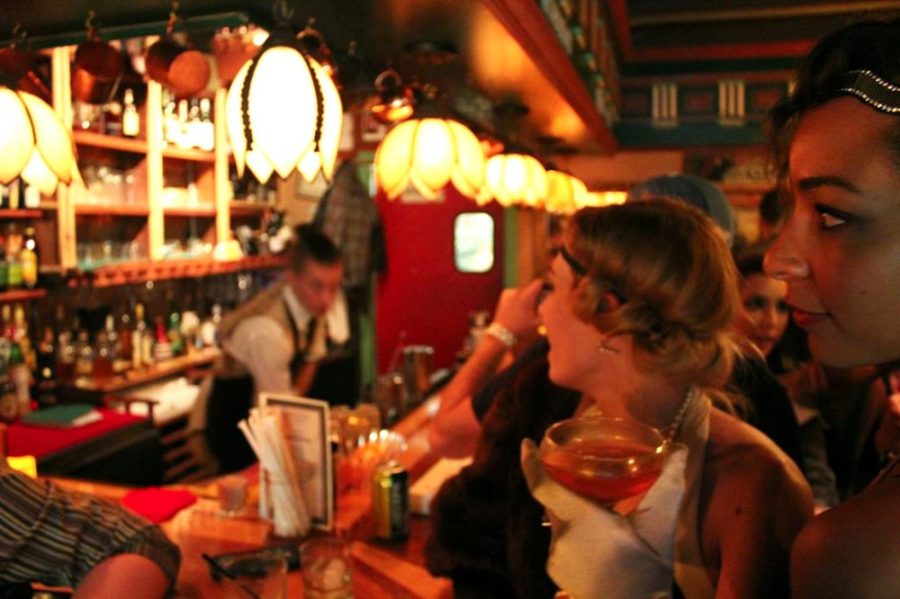Patrons at Espresso Art Café watching Oregon beat down the Wildcats on Friday night weren’t in typical UA attire. The night marked the cafe’s second annual Repeal Day Speakeasy Costume Party, and the spirit of the ’20s was roaring.
In 1919, Congress ratified the 18th amendment, which banned the manufacture, sale, transport, import and export of alcoholic beverages within the U.S. However, the alcohol culture did not cease to exist. It simply went underground and transformed into speakeasies: restaurants or bars where bootleggers would secretly dispense alcohol.
Dec. 5 marks the anniversary of when President Franklin D. Roosevelt repealed the 18th amendment, and Espresso Art celebrated with flapper costumes, jazz and discounted drinks.
The coffee shop and hookah lounge couldn’t have picked a better theme for its locale. The building itself seems to have been designed with the concept in mind.
“From the front, you see the nice coffee facade with an eclectic feel,” said Pelita Murumba, Espresso Art barista and political science senior. “Whenever anybody asks where the bathroom is, though, you tell them, ‘Oh, you have to go through the double doors.’”
Behind those doors, however, customers will also find first edition vintage books and antique sculptures lining the walls of a diversely decorated back room bar. Espresso Art’s ambience has the kind of secrecy necessary for a successful speakeasy setting.
The building’s structure isn’t the only facet of Espresso Art that speaks to the ’20s. Even the back room’s original carpentry has its own Jazz Age flare.
“Everything back here is tailored,” Murumba said. “Every piece of wood is not only hand cut, but it’s originally from a house that was built in Tucson in the 1920s.”
With the quotes “Everything in moderation” and “Chaos reigns in the end” inscribed in Greek above the Art Deco bar, the cafe’s design shares parts of its ideology with America’s pre-Depression attitudes.
In the dim lighting, Murumba said, patrons will find a nightlife scene unlike any other in Tucson, which donned its best 1920s attire for Friday’s occasion.
Murumba commented on what she found to be the most difficult part of her costume.
“The makeup is very, very dark,” she emphasized. “In the 1920s, they started digging up a lot of ancient Egyptian tombs. That’s why people were so interested in darker makeup.”
For former Espresso Art employee and recent UA alumni Chelsea Lockner, ’30s attire was the era of choice for her costume.
“The 1930s were so attractive,” Lockner said. “The women were experimenting after their renewed feminism. … Everything flattered everyone’s figures.”
Citing movies such as “Arabian Nights” and “Some Like it Hot” — and even Hemingway’s writing — as sources of inspiration, Lockner said she particularly appreciates the glamour of the ’30s.
Next year, look out for Espresso Art Café’s third annual speakeasy and enjoy one cent liquor-based coffee drinks and 50 percent off house-apothecary cocktails, while partying in a Gatsby-like fashion.
_______________
Follow Ian Martella on Twitter.









